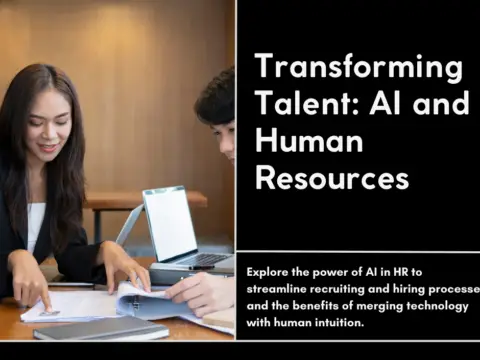Artificial Intelligence (AI) has emerged as a powerful tool in the global fight against climate change. In this exploration, we delve into the ways AI can contribute to environmental sustainability and potentially play a pivotal role in saving the planet.
1. Climate Modeling and Prediction:
- Enhancing Accuracy in Climate Models: AI algorithms can analyze vast datasets, improving the accuracy of climate models. This enhanced modeling capability enables more precise predictions of climate patterns, extreme weather events, and their potential impact on the environment.
2. Energy Efficiency and Consumption Optimization:
- Smart Energy Management: AI-driven systems can optimize energy consumption by predicting demand patterns, managing grid operations, and identifying opportunities for energy efficiency. This proactive approach contributes to the reduction of greenhouse gas emissions associated with energy production.
3. Renewable Energy Integration and Optimization:
- Optimizing Renewable Energy Sources: AI facilitates the integration and optimization of renewable energy sources, such as solar and wind. Machine learning algorithms analyze weather patterns and energy demand to maximize the efficiency of renewable energy systems, making them more reliable and cost-effective.
4. Carbon Capture and Storage Optimization:
- Maximizing Carbon Sequestration: AI technologies assist in optimizing carbon capture and storage processes. From identifying suitable sites for carbon storage to enhancing capture technologies, AI contributes to maximizing the sequestration of carbon dioxide emissions.
5. Precision Agriculture for Emissions Reduction:
- Optimizing Agricultural Practices: AI-powered precision agriculture techniques enable farmers to optimize crop yields while minimizing resource use and emissions. By precisely managing fertilizer application, irrigation, and other inputs, AI contributes to sustainable and eco-friendly farming practices.
6. Forest Monitoring and Conservation:
- Preventing Deforestation and Promoting Conservation: AI facilitates real-time monitoring of forests, detecting illegal logging activities and assessing biodiversity. These insights empower conservation efforts and contribute to the preservation of vital ecosystems for carbon sequestration.
7. Natural Disaster Response and Resilience:
- Enhancing Disaster Preparedness: AI aids in predicting and responding to natural disasters, such as hurricanes, floods, and wildfires. Advanced algorithms analyze historical data to improve early warning systems and enhance disaster response strategies, minimizing the impact on communities and ecosystems.
8. Ocean Monitoring and Conservation:
- Protecting Marine Ecosystems: AI supports ocean monitoring initiatives by analyzing data on sea temperatures, currents, and marine life. This information aids in identifying and addressing issues like overfishing, coral bleaching, and pollution, contributing to the conservation of marine ecosystems.
9. Circular Economy and Waste Reduction:
- Optimizing Resource Management: AI plays a role in transitioning towards a circular economy by optimizing resource management and reducing waste. Smart waste management systems, powered by AI, enhance recycling processes and minimize the environmental impact of waste disposal.
10. Climate-Resilient Infrastructure Design:
- Building for a Changing Climate: AI assists in designing climate-resilient infrastructure by analyzing climate data and predicting future environmental conditions. This proactive approach ensures that infrastructure is built to withstand the challenges posed by climate change.
11. Environmental Monitoring with IoT Sensors:
- Real-Time Data for Informed Decision-Making: AI, in conjunction with Internet of Things (IoT) sensors, enables real-time environmental monitoring. This continuous stream of data helps decision-makers assess environmental conditions, respond to emerging challenges, and formulate effective mitigation strategies.
12. Public Awareness and Education:
- Raising Climate Awareness: AI contributes to public awareness and education on climate change. Through data visualization, predictive models, and interactive platforms, AI technologies enhance communication efforts, fostering a deeper understanding of environmental challenges and the importance of sustainable practices.
Conclusion: A Synergistic Approach to Global Sustainability
While AI alone cannot single-handedly save the planet, its integration into climate change mitigation strategies presents a powerful and innovative approach to global sustainability. As AI technologies continue to advance, their role in addressing environmental challenges evolves, providing hope for a future where humanity and the planet thrive in harmony. The collaborative efforts of scientists, policymakers, and technologists leveraging AI are essential in shaping a more sustainable and resilient world.





